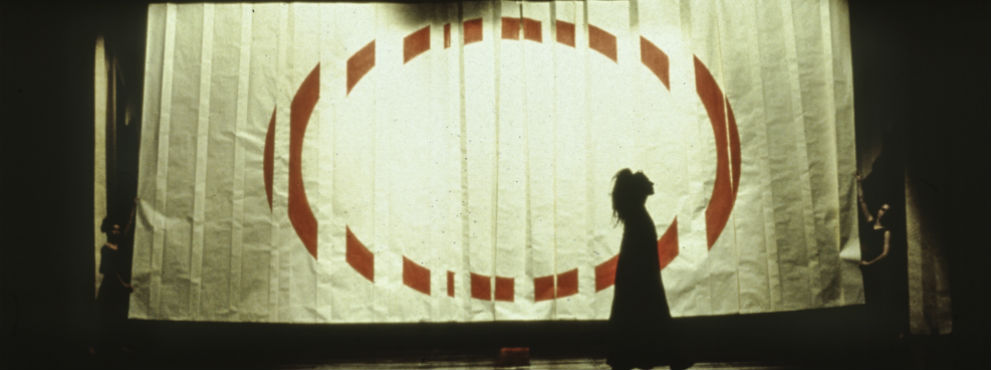inspired by Stéphane Mallarmé
coreography Julie Ann Anzilotti
musics Paul Hindemith, Wilhelm Killmayer, Walter Fähndrich
set design Alighiero e Boetti
set assistant Tiziana Draghi
costumes Loretta Mugnai
1993 interpreters Manuela Taiana, Paola Del Cucina, Roberta Gelpi, Sabrina Vitangeli, Carlos Martin, Julie Ann Anzilotti
2017 interpreters Paola Bedoni (Nutrice), Giulia Ciani (Angelo Custode), Sara Paternesi (Erodiade), Liber Dorizzi (Giovanni Battista), Sara Ladu (Spirito del Bene), Laura Massetti (Spirito Maligno)
vocal composition and voice Gabriella Bartolomei
musical consultation Michele Porzio
production Compagnia XE
in collaboration with Amat – Associazione Marchigiana Attività Teatrali, Fondazione Fabbrica Europa per le arti contemporanee, Fondazione Ravenna Manifestazioni, Fondazione Teatro Comunale di Ferrara, TPP – Teatro Pubblico Pugliese, Torinodanza – Teatro Stabile di Torino Teatro Nazionale, Fondazione Toscana Spettacolo onlus, Fondazione Milano – Civica Scuola di Teatro Paolo Grassi
1993 première Teatro Ponchielli, Cremona, 22th April 1993, in the frame of “Progetto Neoclassico” by Marinella Guatterini
2017 reconstruction Teatro Storchi, Modena, “VIE Festival”, 14th October 2017, in the frame of RIC.CI – Reconstruction Italian Contemporary Choreography Anni ‘80/’90 conception and direction Marinella Guatterini with the support of Silvia Coggiola and Matteo Rinaldini/organization and communication and Alberto Calcinai/photographer
Absolute première
Running time 1 h
Hérodias – Wind Hunger first performed in 1993 at Teatro Ponchielli in Cremona and this year’s VIE Festival is the opportunity to see the work restaged.
The play was inspired by Stéphane Mallarmé’s unfinished poem “Hérodias”, of which only three fragments and some notes endured.
The main figure is Hérodias (or Salome, despite Mallarmé prefers to call her with her mother’s name to diversify her from the modern Salome and related stereotypes: the seven veils etc.) examined through the enormous loneliness and bitterness she is experiencing.
The set design, conceived by the famous contemporary visual artist Alighiero e Boetti prematurely passed away in 1994, is a distinctive sign of those times when theatre could trust on very active collaborations between art creators of various disciplines, mostly painters or visual artists in general.
Before meeting the choreographer Julie Ann Anzilotti, Alighiero e Boetti had never worked on a theatre creation before. He started shortly before his death and with such a fervour that he encouraged the choreographer herself to the point of dispelling her doubts.
The red backdrop, the little curtain by Boetti and the rest of the set create an evocative space for metamorphosis, a “sacred” enclosure of geometrical lucidity and suggestive visual inventions.
This artistic set design is a symbol of great beauty and gives the entire performance the authoritative tone typical of many productions of that time.
The choreographic narration finds its double in the original musicality of the language, embodied here by Gabriella Bartolomei’s voice-over and by Paul Hindemith’s captivating music.


